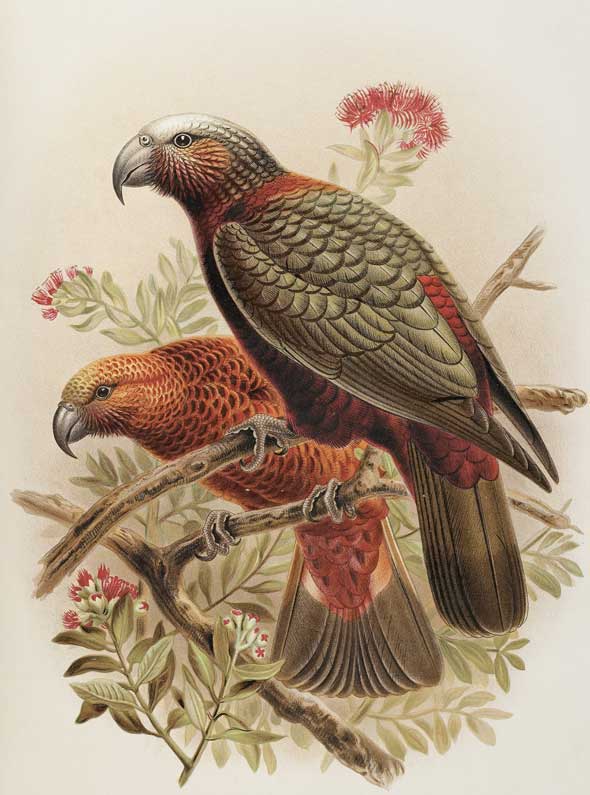 Käkä, chromolithograph, 1888
Käkä, chromolithograph, 1888
TLF ID R4202
This is a print of two käkä (native New Zealand parrot, 'Nestor meridionalis') sitting among the crimson flowers of a rata tree. The bird on the left is the rare käkä kura (red käkä), while the one on the right has the more common brown plumage. A fully grown käkä can reach 45 cm in length and weigh between 425 g and 575 g. This chromolithograph from Walter Buller's 'A History of the Birds of New Zealand', second edition (1888), is after a watercolour by J G Keulemans (1842-1912) and measures 27.5 cm x 21.0 cm.
